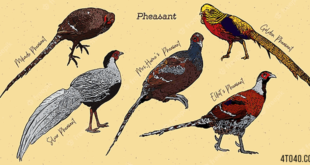 Kingfisher — Kingfishers are a group of small to medium sized brightly coloured birds in the order Coraciiformes. They have a cosmopolitan distribution, with most species being found in the Old World and Australia. The group is treated either as a single family, Alcedinidae, or as a suborder Alcedines containing three families, Alcedinidae (river kingfishers), Halcyonidae (tree kingfishers), and Cerylidae (water kingfishers). There are roughly 90 species of kingfisher. All have large heads, long, sharp, pointed bills, short legs, and stubby tails. Most species have bright plumage with little differences between the sexes. Most species are tropical in distribution, and a slight majority are found only in forests. They consume a wide range of prey as well as fish, usually caught by swooping down from a perch. Like other members of their order they nest in cavities, usually tunnels dug into the natural or artificial banks in the ground. A few species, principally insular forms, are threatened with extinction.
Kingfisher — Kingfishers are a group of small to medium sized brightly coloured birds in the order Coraciiformes. They have a cosmopolitan distribution, with most species being found in the Old World and Australia. The group is treated either as a single family, Alcedinidae, or as a suborder Alcedines containing three families, Alcedinidae (river kingfishers), Halcyonidae (tree kingfishers), and Cerylidae (water kingfishers). There are roughly 90 species of kingfisher. All have large heads, long, sharp, pointed bills, short legs, and stubby tails. Most species have bright plumage with little differences between the sexes. Most species are tropical in distribution, and a slight majority are found only in forests. They consume a wide range of prey as well as fish, usually caught by swooping down from a perch. Like other members of their order they nest in cavities, usually tunnels dug into the natural or artificial banks in the ground. A few species, principally insular forms, are threatened with extinction.
The taxonomy of the three families is complex and rather controversial. Although commonly assigned to the order Coraciiformes, from this level down confusion sets in. The etymology of kingfisher is obscure, the term comes from king’s fisher, but why that name was applied is not known.
The kingfishers were traditionally treated as one family, Alcedinidae with three subfamilies, but following the 1990s revolution in bird taxonomy, the three former subfamilies are now usually elevated to familial level. That move was supported by chromosome and DNA-DNA hybridisation studies, but challenged on the grounds that all three groups are monophyletic with respect to the other Coraciiformes. This leads to them being grouped as the suborder Alcedines.
The tree kingfishers have been previously given the familial name Dacelonidae but Halcyonidae has priority. This group derives from a very ancient divergence from the ancestral stock.
Kingfishers live in both woodland and wetland habitats. Kingfishers that live near water hunt small fish by diving. They also eat crayfish, frogs, and insects. Wood kingfishers eat reptiles. Kingfishers of all three families beat their prey to death, either by whipping it against a tree or by dropping it on a stone.
They are able to see well both in air and under water. To do this, their eyes have evolved an egg-shaped lens able to focus in the two different environments.
The Old World tropics and Australasia are the core area for this group. Europe and North America north of Mexico are very poorly represented with only one common kingfisher (Common Kingfisher and Belted Kingfisher respectively), and a couple of uncommon or very local species each: (Ringed Kingfisher and Green Kingfisher in the southwest USA, Pied Kingfisher and White-breasted Kingfisher in SE Europe).
Even tropical South America has only five species plus wintering Belted Kingfisher. In comparison, the tiny African country of The Gambia has eight resident species in its 120 by 20-mile (32 km) area.
The six species occurring in the Americas are four closely related green kingfishers in the genus Chloroceryle and two large crested kingfishers in the genus Megaceryle, suggesting that the sparse representation in the western hemisphere evolved from just one or two original colonising species
The smallest species of kingfisher is the African Dwarf Kingfisher (Ispidina lecontei), which averages at 10.4 g and 10 cm (4 inches). The largest overall is the Giant Kingfisher (Megaceryle maxima), at an average of 355 g (13.5 oz) and 45 cm (18 inches). However, the familiar Australian kingfisher known as the Laughing Kookaburra (Dacelo novaeguineae) may be the heaviest species, since large individuals exceeding 450 g (1 lb) are not rare.
 Kids Portal For Parents India Kids Network
Kids Portal For Parents India Kids Network




